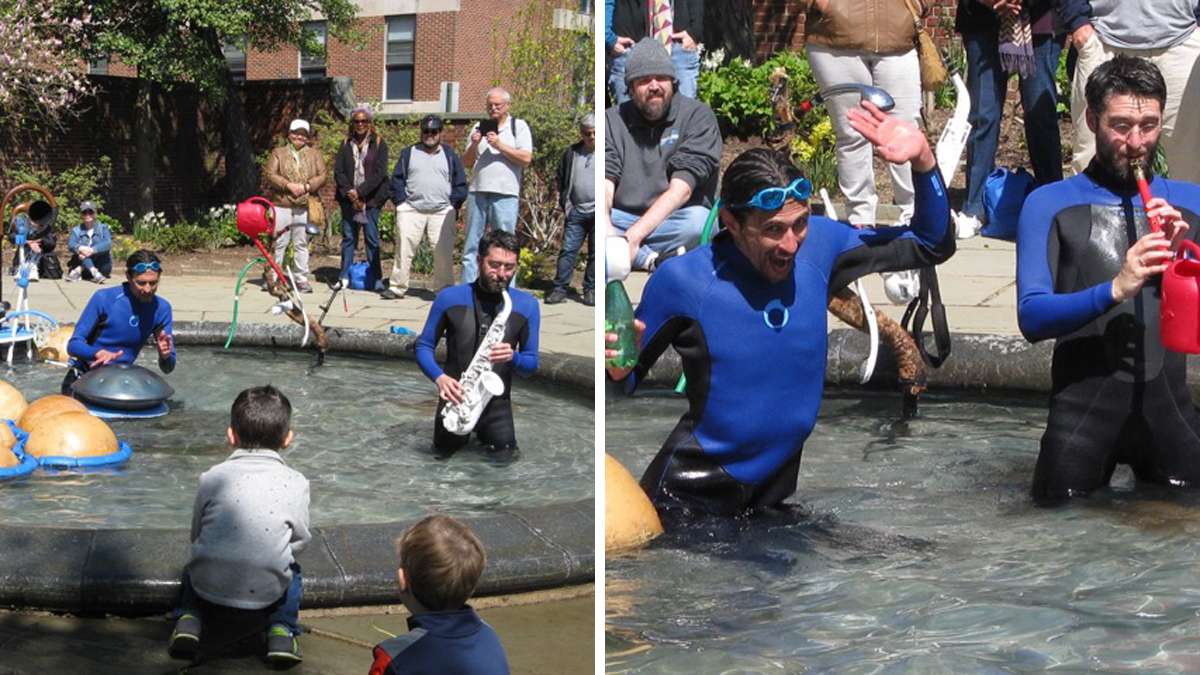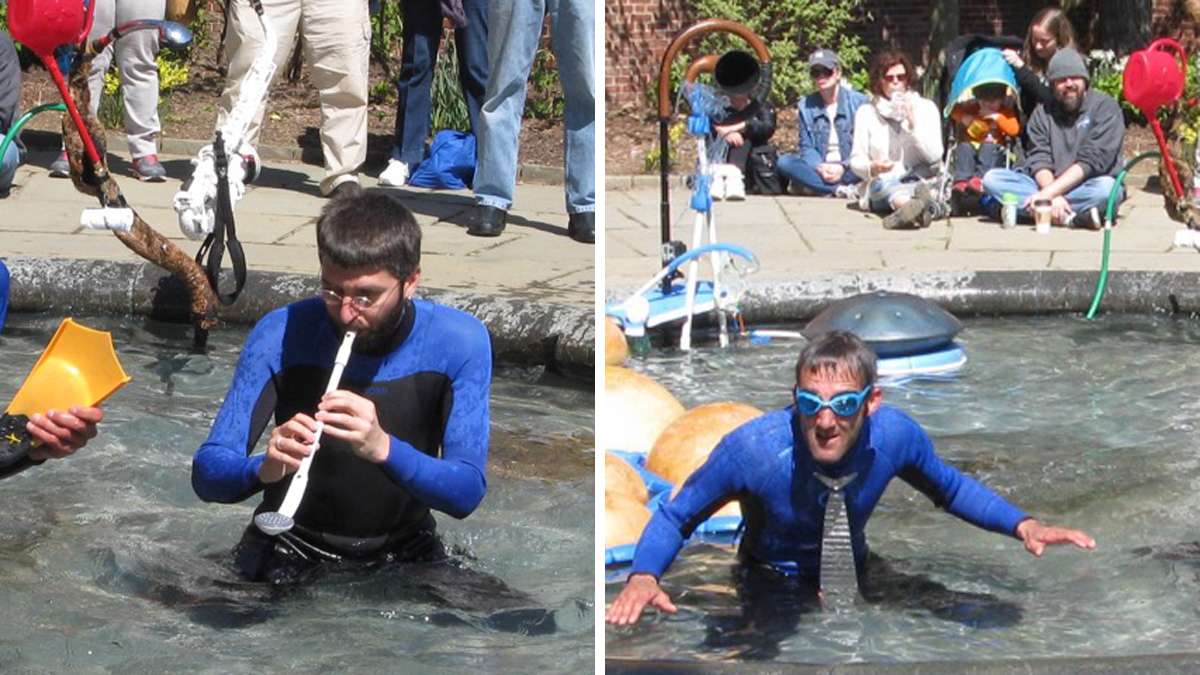From water music to yarn bombs, what is art for, if not to get a little weird?
Philadelphia is a bubbling cauldron of wildly provocative, fun, unexpected, quirky, annoying, inspiring, instantly accessible, off-putting, and downright weird art.
Art (n): The creation of beautiful things; the expression of human imagination
Fifty people gathered in Old City’s Magnolia Garden during the Philadelphia International Festival of the Arts (PIFA). It was a cool Friday morning and a concert was in the offing. Waiting by the fountain they saw, floating in the thigh-deep water, a cluster of golden-brown orbs, a dimpled metal sphere set atop a life preserver, and, hanging on stands, a hand-held shower nozzle, red watering can, white saxophone, and all manner of plastic tubes.
At the appointed hour, three musicians in scuba suits entered behind the crowd, creeping along the garden walls and through the shrubbery. Aquacoustique had arrived for their American debut.
Color outside of the lines
Aquacoustique’s “Concerto in Sea Major” is just one of the offerings that populate festivals such as PIFA and the Fringe Festival. While beautifully creative, they often don’t come boxed in concert halls or museums, and they frequently don’t fit traditional expectations of art. Yet art they are — and Philadelphia is a bubbling cauldron of such events: wildly provocative, fun, unexpected, quirky, annoying, inspiring, instantly accessible, off-putting, and downright weird. Turn almost any corner and there is something happening that defies description, bewilders critical evaluation, and makes sense to someone.
In April, PIFA presented more than 60 events over 16 days, many of them, for the conventional arts patron, a little strange. Acrobats explored knitting and peace balancing on giant balls of yarn; a fire sculpture lit the night; a music-poetry-video performance was born from war veterans’ dreams; and three Frenchmen stood thigh-deep in water, playing folk, rap, jazz, and pop on objects found at Ace Hardware and Sea World.
The reedy tone of the showerhead, the steely timbre of the floating metal disc, and the thwacking of snorkeling fins may not be your idea of art, but the Magnolia Garden crowd, which ranged from pediatric to geriatric, was delighted.
Growing audiences, making art fun
Aquacoustique’s musicianship is legitimate: Founder Jean-Philippe Carde, Florent Lalet, and Stéphane Gratteau are all formally trained and perform with skill and enthusiasm. Their stage (pool?) presence combines equal parts Inspector Clouseau and Jacques Cousteau, engaging the audience conspiratorially, as if to say, “This is a silly thing to do, but doesn’t it sound great, and aren’t we having fun?”
It is, it did, and they were. A man leapt from his bench and danced around the performers, inspiring several toddlers to approach to the rim of the fountain. Most listeners stood in place but couldn’t hold still, smiling, beating time, and leaning into the music — until the trio slid tiny goggles over their eyes and made the water their only instrument, enveloping themselves and anyone standing close by in a liquid curtain.
But is it art?
If the artist’s job is to entice the eye and make it see anew, to shake things up, shouldn’t the first thing shaken be art itself? The yarn-walkers and fire-sculptors and aquatic musicians do it by shattering expectations, challenging patrons who think they know art, and attracting people who think they’re not interested in art, and getting everyone into the same space to see something new.
So play on, aquamen. Beguile us with your splashy backbeat. Unmoor ideas about art. Take our imaginations for a swim.
WHYY is your source for fact-based, in-depth journalism and information. As a nonprofit organization, we rely on financial support from readers like you. Please give today.



